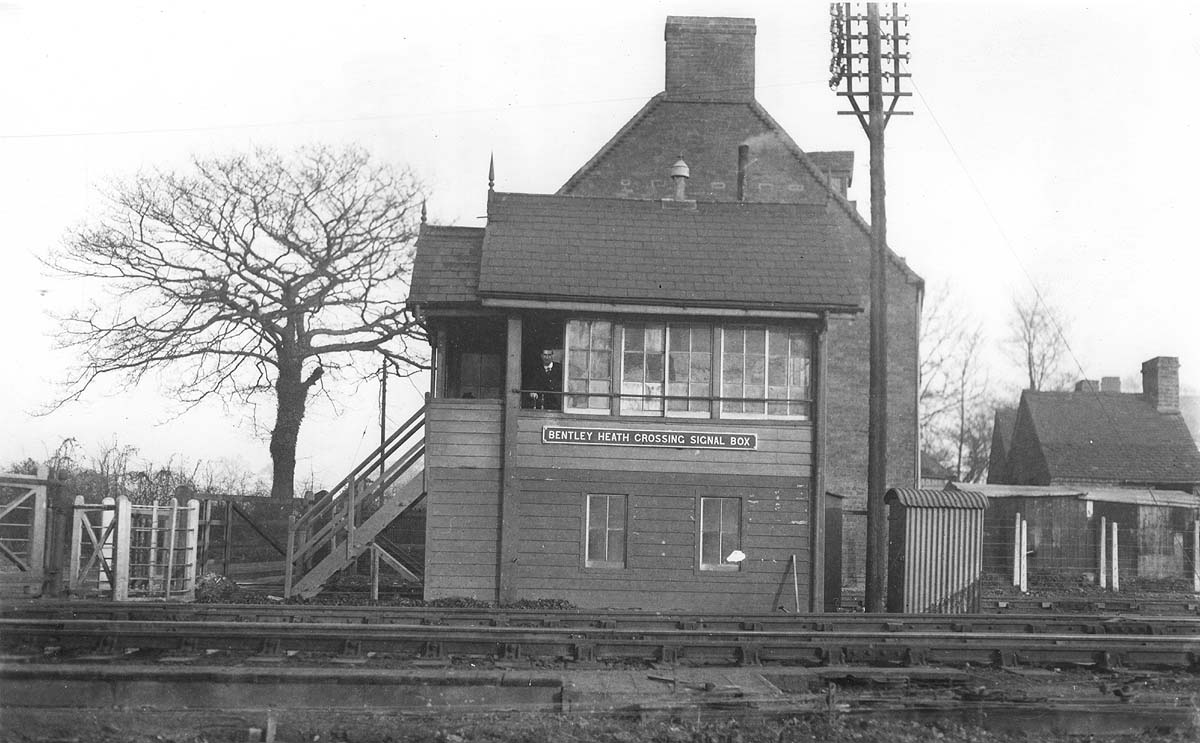|
|
 |
 |
|
GWR Route: Banbury to Wolverhampton
Bentley Heath Crossing: gwrbh24
 |
The original signal box at Bentley Heath seen here prior to
work starting on the quadrupling of the line circa 1930. The signal box is
believed to have been constructed around 1877 which is when the Great Western
Railway decided to generally adopt the absolute block system of signalling and
the interlocking of signals with switches. As well as providing an additional
block section between Widney Manor and Knowle, the signal box also controlled
the level crossing gates. The level crossing can just be seen on the left of
the photograph. The space-interval or absolute block system was eventually made
compulsory on passenger lines by the Regulation of Railways Act (1889)
following a series of fatal accidents. It refers to a system of signalling,
which is designed to prevent more than one train being in any block section
between two adjacent signal boxes at the same time. It relies on communication
between signal boxes by telegraph wires; enabling signalling messages to be
sent by bell codes and indications about the block status to be sent and
displayed in the adjacent signal boxes. In 1930 most telegraph circuits were
still overhead and a stayed leading-in pole can be seen prominently next to the
signal box.
The Bentley Heath Crossing signal box is a McKenzie &
Holland type 3 signal box of which 92 were constructed for the Great Western
Railway or its constituents. Like its successor it had horizontal
weatherboarding and a gabled roof, but it also had a two pane by three pane
sliding window arrangement and roof finals. On these type of signal boxes the
bargeboards were normally plain with rounded feet. In February 1901, the up and
down refuge sidings were extended from Knowle station to the level crossing at
Bentley Heath and converted in to goods loops by the addition of switches at
Bentley Heath. This required a new 15 lever frame to be installed in the
existing signal box at Bentley Heath. These goods loops could originally hold
105 wagons plus the brake van and engine. Following the quadrupling in 1933 the
goods loops had to be cut back and from then on had a reduced capacity of 89
wagons on the down side and 80 wagons on the up side.
Robert Ferris
 back back

|
|
|
